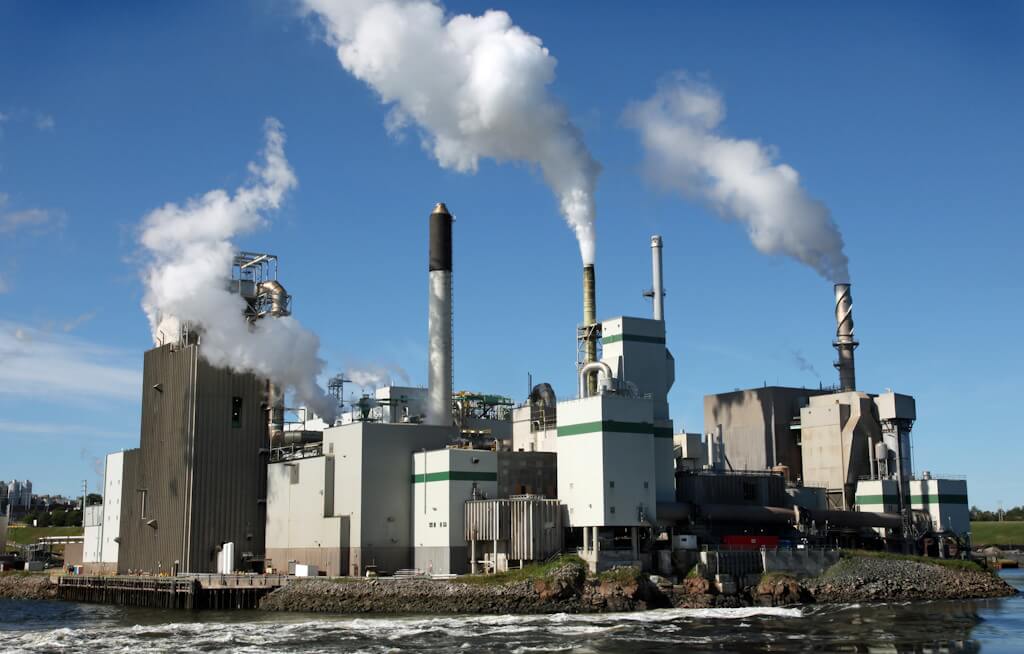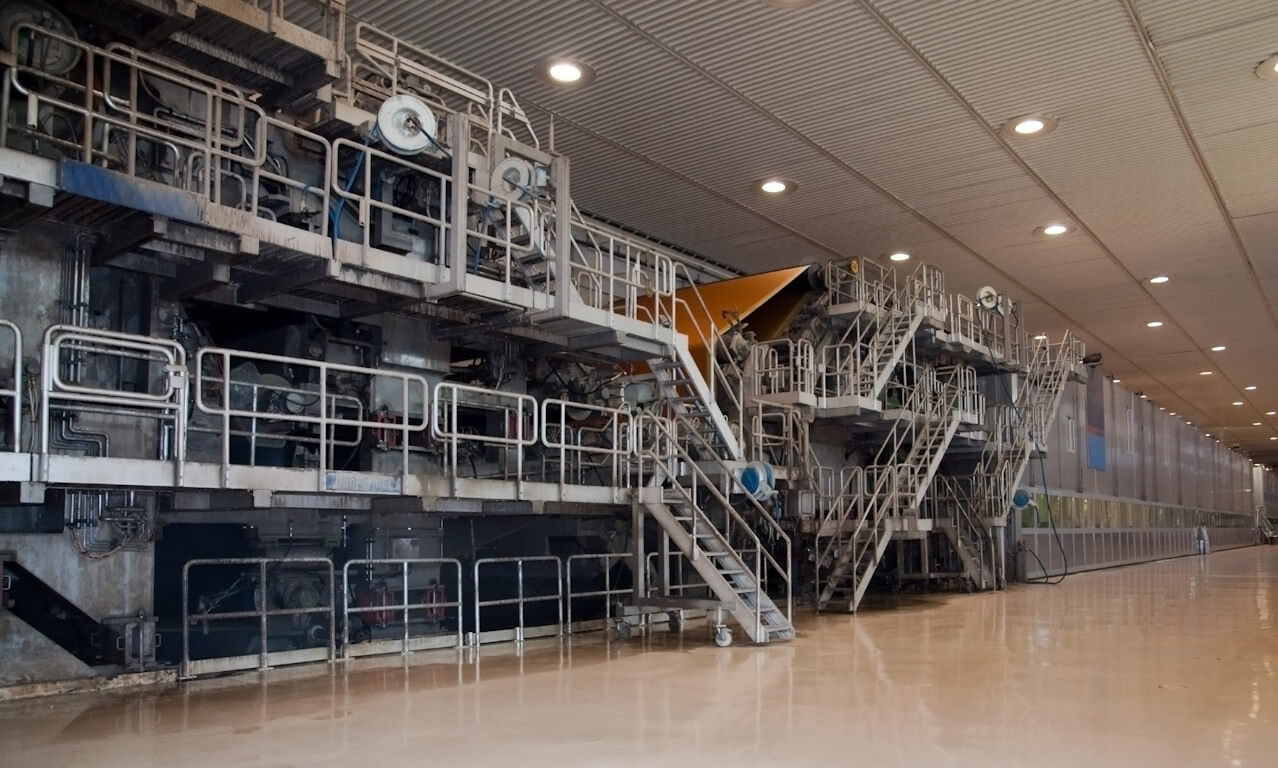In the age of accelerating digitalization, the paper products industry is often considered a dying business. But is that actually true? In fact, the use of paper goods is growing year on year. Long an important end-use market for molybdenum-containing alloys, applications for stainless steels in pulp and paper processing are also increasing.
By Jim Fritz, IMOA
Digitization over the last 15 years has led to a sharp decline in graphic paper products such as newsprint and printing paper. From 2010 to 2017, demand shrunk at an average annual rate of 2.4%. After 2018, the rate of decline rapidly accelerated to 6.2% through 2021. However, despite the decrease in graphic goods, other products such as packaging paper, paperboard, household, and sanitary items have grown, driven by the rapid increase in E-commerce and rising demand from growing economies like India. These trends have resulted in a modest net annual growth rate of approximately 1 to 2% for the paper industry overall since 2010. Super austenitic and duplex stainless steels play an important and expanding role in this evolving industry.
Drying paper requires tons of energy
Making paper starts with either wood chips or wastepaper. The most widely used method is the Kraft process, which converts wood into pulp to produce paper products. The process starts with wood chips that are mixed with a hot mixture of water, sodium hydroxide, and sodium sulfide, which are cooked in a pressurized digester. This digestion process converts the wood chips into a pulp of cellulose fiber, the primary component of paper. After digestion, the crude pulp is collected, washed, and bleached, typically with chlorine dioxide solutions, to achieve the desired white color. Sometimes, hydrogen peroxide or ozone are used for bleaching. Recycled wastepaper does not need to be digested. Instead, the effort lies in sorting plastic and other garbage from the wastepaper stream, followed by washing and bleaching.
In both cases, the bleached pulp is sent to an enormous papermaking machine known as a fourdrinier for conversion into reams of paper. The pulp is diluted into a slurry and sprayed across a screen to form a pulp mat, which goes through a series of dewatering, drying, and rolling operations to form the final paper product. The paper rolls through the fourdrinier at up to 100 km/h. The final product is giant rolls of paper, which are inspected and cut to sell.
Drying pulp into paper is very energy-intensive because a large amount of water must be removed.
The European Heat Pump Association (EHPA) calculates, on average, that the electricity needed for a single papermill is enough to power approximately 30,000 homes for a year. Technological advancements that result in better water extraction, improved heat recovery, and cogeneration can increase the industry’s energy efficiency while reducing emissions.
There is a concerted effort by the Confederation of the European Paper Industries (Cepi) and EHPA to more widely implement high temperature industrial heat pumps, which capture wasted heat from the paper drying process. Heat pumps use heat from a lower temperature source and “upgrade” it to a higher temperature for process heat requirements. Recent developments allow the use of large heat pumps and steam compressors that operate up to 200°C. With this technology, the potential energy savings during the paper drying process were calculated at more than 50%. Heat pump components like heat exchanger tubes may be made in Type 304 or Type 316 stainless steel, depending on the corrosivity of the incoming waste heat steam.
| Application | Material | Molybdenum content |
| Pulping digestors | 2205 duplex stainless steel (UNS S32205) | 3% |
| D-stage bleaching pumps and reaction vessels | Super duplex & super austenitic stainless steels | 4.5% (duplex); 6 – 7% (austenitic) |
| Drying suction rolls | 3ER60 duplex stainless steels (UNS S31500), 2205, 2101, (UNS S32101), 2304 (UNS S32305) | 2,8%, 3%, 0.3%, 0.3% |
| Heat pumps, heat exchangers | Type 316 stainless steel | 2% |
Stainless steel plays many roles in paper-making
The pulp and paper industry has used stainless steel and other corrosion-resistant alloys to improve equipment life and reliability for over 70 years. The optimum construction material for plant equipment depends on the specific process and technology applied; however, molybdenum-containing stainless steels are used widely throughout production.
The use of duplex stainless steel in pulp and paper is increasing due to its high strength and superior resistance to chloride stress corrosion cracking and alkaline environments. Examples include the use of the 2205 duplex stainless steel for digesters in both the sulfate and sulfite pulping processes. More highly alloyed, 2507 duplex stainless steel is also a popular material for piping and other components in the bleaching area of the plant.
The excellent corrosion and fatigue resistance of duplex stainless steels also makes them ideal for the suction rolls in the fourdrinier that remove water during the papermaking process. The duplex stainless steel alloy 3ER60 is commonly used in suction roll applications alongside other duplex grades such as 2205, 2101 and 2304. The D-stage bleaching process, the most corrosive stage of papermaking, typically exposes the equipment materials to chlorine and chlorine dioxide environments at higher temperatures of 70 to 80°C. Because of their strong resistance to localized attack, super austenitic and super duplex stainless steels are used for pumps and reaction vessels in this acerbic process.
As the pulp and paper industry adjusts its production capacity to meet the evolving global marketplace and implements technological advancements for more efficient plants, the industry will continue to grow. As papermaking transforms, molybdenum-bearing stainless steels remain vital construction materials for its processing equipment.
Reproduced with the kind permission of the International Molybdenum Association (IOMA). IMOA is a non-profit trade association representing the majority of the molybdenum industry worldwide. For information visit www.imoa.info
About this Featured Story
Appearing in the November 2024 issue of Stainless Steel World Magazine, this Featured Story is just one of many insightful articles we publish. Subscribe today to receive 10 issues a year, available monthly in print and digital formats. – SUBSCRIPTIONS TO OUR DIGITAL VERSION ARE NOW FREE.
Every week we share a new Featured Story with our Stainless Steel community. Join us and let’s share your Featured Story on Stainless Steel World online and in print.






